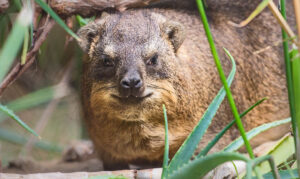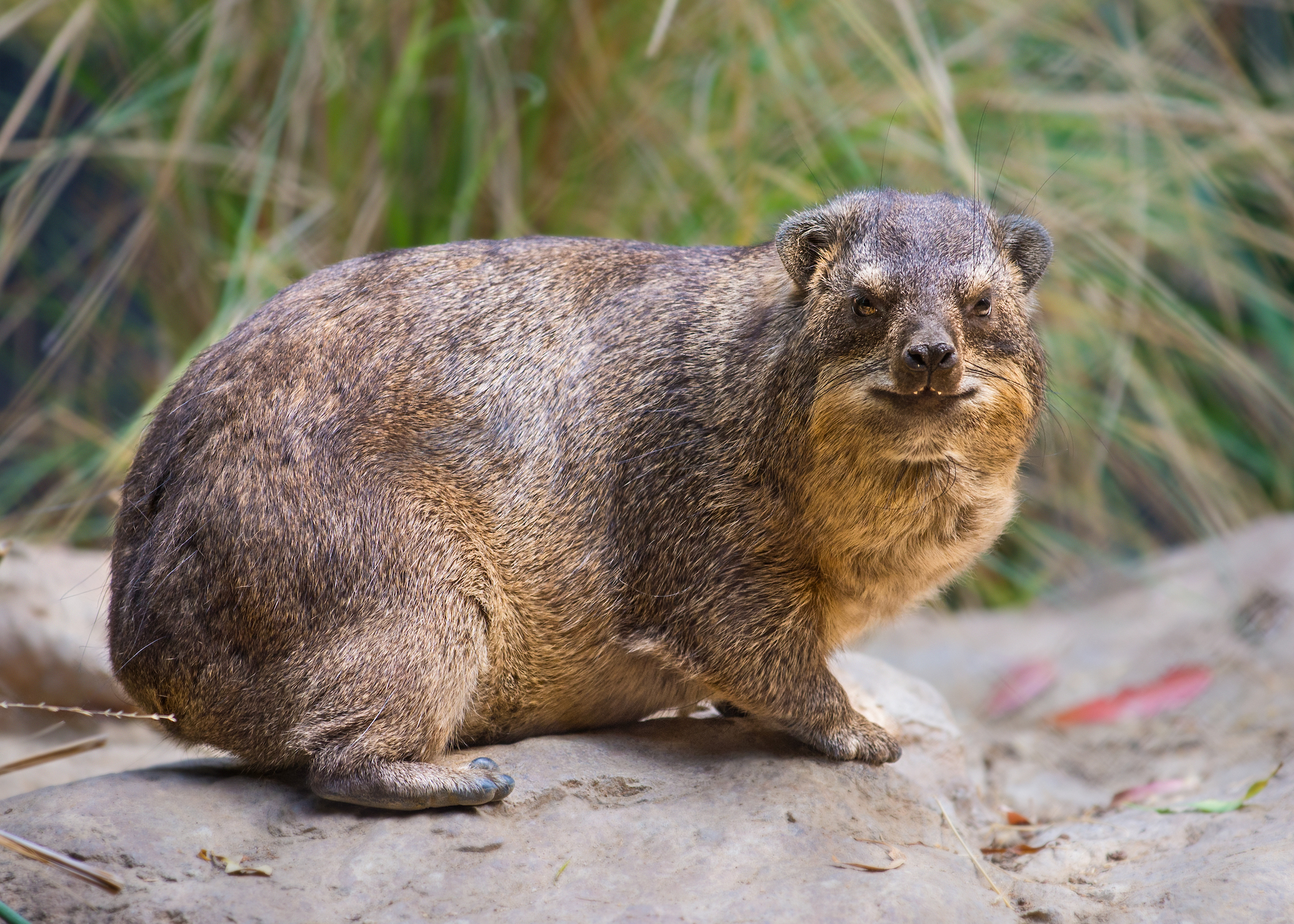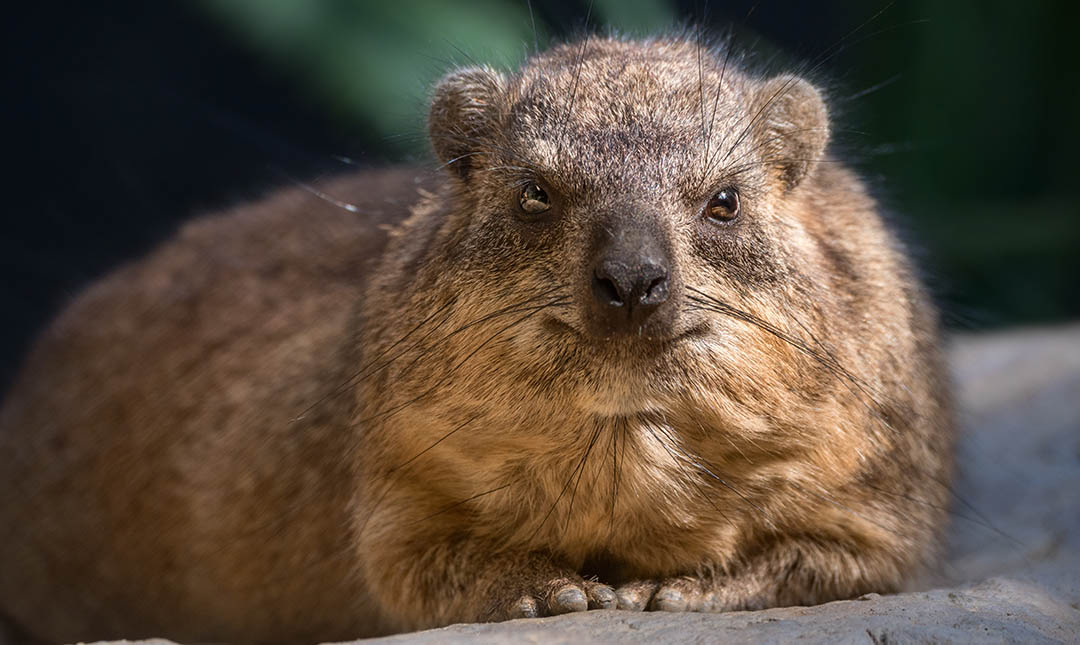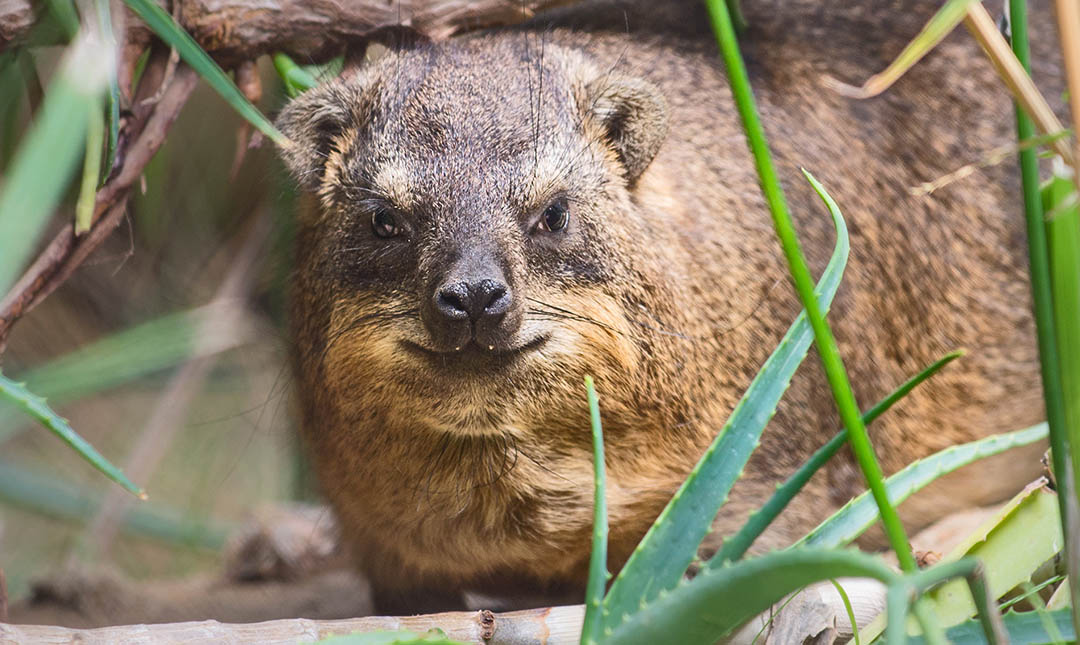About
Although rock hyraxes look like rodents, DNA analysis has shown that their closest relatives are elephants and manatees. But is has been about 60 million years since they diverged from their common ancestor. Hyraxes retain little tusks, toes, and a skull structure similar to that of an elephant. They are called rock hyraxes because they live in the cracks and crevices of rocks throughout much of Africa. Built for rock climbing, they easily run up steep, smooth rock faces. The soles of their feet have rubbery pads for traction that are kept moist by sweat glands. Muscles in the middle of the sole act like a suction cup.
Rock hyraxes are diurnal (active during the day) and gregarious. The basic family unit consists of an adult male, several adult females, and their offspring. Single males live in bachelor groups. Larger rocky outcrops may support several family groups of up to 50 individuals. A territorial male will often stand sentry duty on a high rock and call if a predator is spotted. Predators include eagles, leopards, and lions. A gland on their backs excretes pheromones that are used to mark territory. Hyraxes are vocal and all members of a group whistle, scream, and chatter.
After a gestation of six to eight months, females give birth to litters of two to four babies. After the mother licks the babies clean, they climb onto her back near her pheromone gland to imprint her scent and stay warm. Babies are able to jump by the time they are two days old and eat solid food at about two weeks. One of their first meals is to eat their mother’s poop. It is a critical step to acquire the bacteria they need to digest food. Hyrax excrement serves many purposes. Dung and urine are deposited in communal “latrines,” which create a strong smell, turn the rocks white, and may serve as territorial markers. Hyrax poop and urine have been used in traditional folk medicine as well. Hyrax waste has also been used to create a musky perfume.
Although they are mammals, like reptiles, hyraxes rely on ambient warmth to help regulate their body temperature. They sunbathe to warm up in the morning and seek out shade in the afternoon to cool down. At night or when resting, they huddle together. They spend 95 percent of their time resting.


Habitat
Rock hyraxes are found across much of Africa and live in a wide range of habitats from arid deserts to forests. They also live in Lebanon, Jordan, and Israel. Rock hyraxes depend on rocky outcrops (kopjes) and mountain cliffs for shelter.
Diet
Herbivore. Rock hyraxes are grazers, feeding mainly on grasses but will also eat shrubs and forbs. They spend less than an hour per day feeding.
Physical Characteristics
Body length is one to two feet and weight is between four and 12 pounds. Lifespan is between five and 12 years.
LOCATION WITHIN THE ZOO
You’ll find this animal in the Animals of the Drylands section. See Zoo Map.



